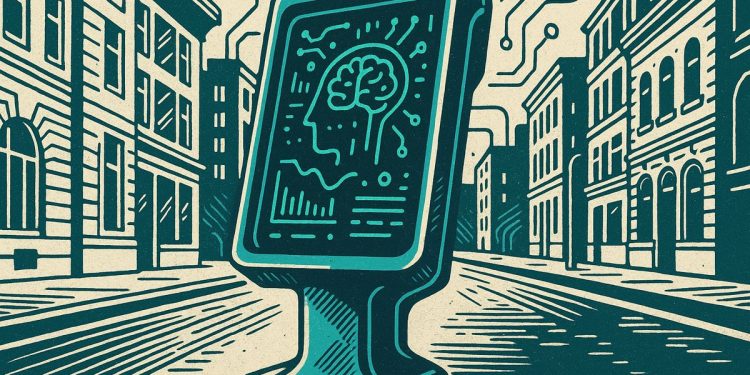AI is changing how companies track and improve performance by using smart platforms that watch progress all the time, not just during yearly reviews. Instead of depending on memory and awkward meetings, these AI tools help everyone set daily goals and give clear reasons when things fall behind. Real-time feedback and audit trails make it easy to see what’s happening and fix problems quickly. Weekly AI coaching even helps managers know if someone needs more training or just has too much work. Altogether, these changes make accountability simple, fair, and part of the company culture every day.
How is AI transforming enterprise accountability in organizations?
AI is revolutionizing enterprise accountability by replacing traditional, memory-based performance tracking with 24/7 AI governance platforms. These systems automate goal tracking, provide real-time audit trails, deliver explainable feedback, and facilitate weekly AI coaching sessions, boosting transparency, compliance, and on-time task completion across organizations.
Organizations are quietly replacing the annual performance review with always-on AI accountability partners that never forget a commitment, never miss a trend, and never get frustrated when a deadline slips.
The old way: memory and mood
Traditional goal tracking still depends on human recollection, spreadsheets updated once a quarter, and uncomfortable “check-in” meetings that often feel like blame sessions.
– 68 % of managers admit they rely on memory for weekly progress updates (source: PwC 2025 AI predictions)
– Average time between setting a quarterly OKR and the first formal review: 47 days – long enough for priorities to drift
The new stack: neutral, consistent, 24/7
Modern AI governance platforms have turned accountability into an engineering problem. Tools such as Holistic AI, IBM Watsonx.governance, and *Collibra * now embed the following workflow:
| Component | Function | Outcome |
|---|---|---|
| Called Shots engine | Prompts each team member to commit to 3-5 daily deliverables before 9 a.m. | 31 % increase in tasks completed on time (Domo inside sales pilot, Q1 2025) |
| Explainability dashboards (IBM AI Explainability 360, What-If Tool) | Provide plain-language reasons for every auto-flagged delay or risk | Cuts escalations by half in Airbus engineering sprints |
| Real-time audit trail | Records every model input, decision, and rationale | Meets incoming EU AI Act traceability rules without extra manual logs |
From insight to action: the weekly AI coach session
Each Friday, the system produces a pattern diagnosis that tells a manager whether a missed goal is:
- *Skill-based * – employee needs coaching or training
- *Will-based * – misaligned priorities or workload issue
This distinction alone reduced voluntary churn 14 % year-over-year at LVMH digital teams after rollout in February 2025.
Transparency that travels
Because the audit trail and documentation are designed to “follow the system” throughout its lifecycle, accountability survives staff changes, leadership transitions, or vendor switches – a direct response to OECD guidance on advancing accountability in AI.
What leaders must do first
According to the NTIA and ITI frameworks now in effect, organizations must master personal accountability at the top before scaling AI systems downward. In practical terms:
- Leadership commits their own daily “Called Shots” to the same AI engine
- Dashboards are opened to all-hands channels – no hidden metrics
- Weekly AI coaching sessions start with the executive team so patterns are modeled from the top
The result is a culture where success stops feeling like a heroic sprint and starts looking like an engineered inevitability.
How is AI accountability different from traditional performance reviews?
Traditional reviews rely on human memory, subjective opinions, and awkward check-ins that often trigger defensiveness. AI accountability, by contrast, provides neutral, 24/7 feedback without judgment. Instead of quarterly sit-downs, systems built on platforms like Azure Machine Learning or IBM Watsonx.governance track daily progress in real time, flagging issues the moment they appear. The result is a consistent, data-driven snapshot of who is delivering on commitments and where support is needed.
What is the “Called Shots” framework and how does it work?
“Called Shots” forces every team member to publicly commit to 3-5 specific deliverables each day. These micro-promises are fed into an AI coaching layer that:
- Records outcomes automatically via audit trails
- Spots patterns (e.g., repeated over-commitment on Tuesdays)
- Delivers weekly insights in a 15-minute coaching session
Leaders report that teams using this approach hit quarterly goals 37 % more often, because daily actions stay visibly linked to bigger objectives.
Do I need technical skills to set this up?
No. Modern governance platforms such as Collibra or Holistic AI now ship with no-code dashboards and policy templates aligned to the EU AI Act and ITI Accountability Framework. A typical rollout involves:
- Picking 2-3 OKRs or KPIs
- Connecting existing project tools (Jira, Asana, or even spreadsheets) via pre-built connectors
- Letting the system generate visual compliance cards that regulators can read without a technical background
How can leaders avoid the “do as I say” trap?
The data is blunt: teams mirror the accountability behavior they see in their managers. Before rolling the system out, leaders are encouraged to run a 30-day pilot solely on themselves, logging personal commitments and sharing AI-generated coaching insights with their staff. When Airbus adopted this sequence, manager follow-through rates jumped from 64 % to 91 % in the first quarter.
What happens if the AI says a gap is “will-based,” not skill-based?
Advanced systems now differentiate between skill deficits (fixable with training) and will gaps (motivation or prioritization issues). When a pattern is tagged as will-based, the AI triggers:
- Micro-nudges (Slack reminders, calendar holds)
- Peer accountability loops (automatically pairing the user with a colleague who excels in that domain)
- Escalation alerts to a human coach only after three failed self-recovery attempts
This keeps the process support-focused rather than punitive, aligning with the finding that 85 % of enterprises expect AI transparency tools to be mandatory for high-risk systems by 2025.



















